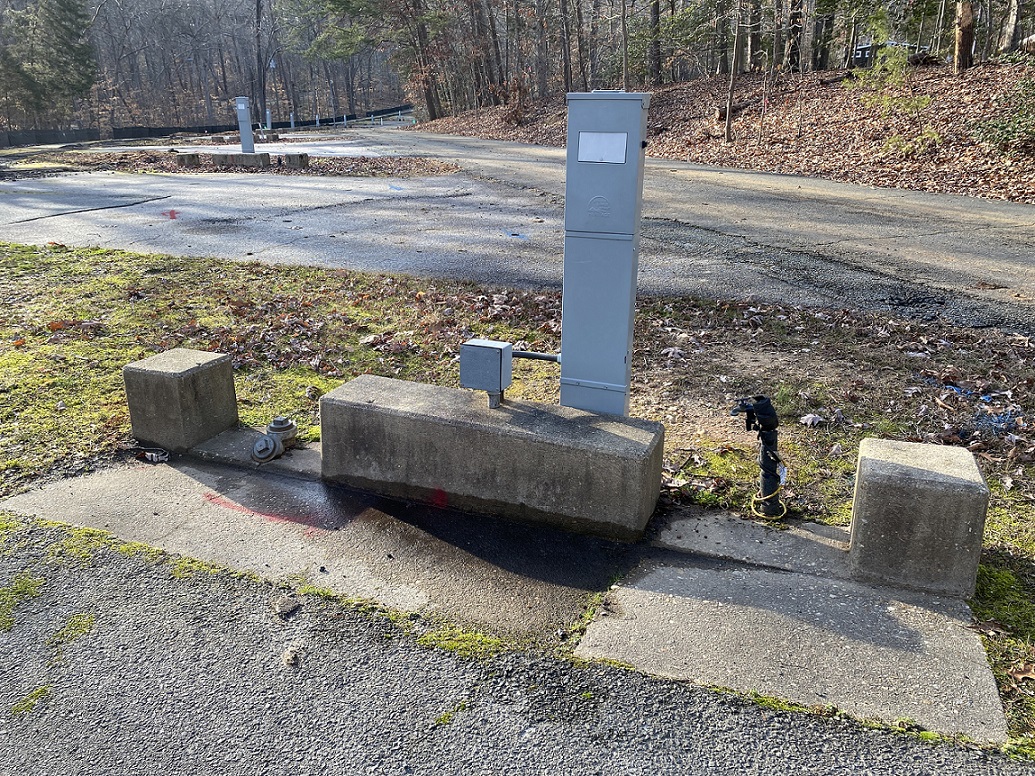News Release
You are viewing ARCHIVED content published online before January 20, 2025.
Please note that this content is NOT UPDATED, and links may not work. For current information,
visit https://www.nps.gov/aboutus/news/index.htm.

NPS Photo
|
Subscribe
|
Contact: Gregg Kneipp
Prince William Forest Park would like to notify the public of an adverse effect to potential historic resources in the park’s RV campground, as required by 36 CFR § 800.6(a)(4).The RV campground located off Highway 234 on the eastern side of the park is currently undergoing infrastructure improvements. Part of this project is replacing the existing campsite sewer and electrical hookups, which are built into concrete utility barriers in Rows D and E of the campground. Because of the design, there is no way to replace the existing sewer and electrical hookups without damaging the concrete barriers nor is there a way to salvage them. There are 29 RV campsites with concrete barriers: 14 on Row D and 15 on Row E.
Photographs from 1965 show the concrete barriers, which could mean that they are original to the campground. The RV campground was built as part of a Mission 66 project, a period of major development in national parks across the country from 1956-1966. Some campgrounds built as Mission 66 projects may be listed on the National Register of Historic Places or considered eligible for listing.
Unfortunately, as this is an ongoing construction project, the park will not be able to evaluate the concrete barriers as part of a broader Mission 66 historical landscape. Prince William Forest Park will treat these concrete barriers as eligible small scale contributing features for the National Register of Historic Places and consider their demolition and removal an adverse effect in accordance with our National Historic Preservation Act obligations.
Prince William Forest Park is consulting with the Virginia State Historic Preservation Office to mitigate this adverse effect. The proposed solution is to document the concrete utility barriers and replace them with modern, concrete-filled steel bollards. Saving and reusing the concrete utility barriers was considered as an option but would likely not be successful.
Additional Information about the RV Campground
The RV campground (known as the Travel Trailer Village until approximately 2008) was evaluated as part of the 2012 Prince William Forest Park National Register nomination and determined to be non-contributing to the parkwide historic district, although it was not yet fifty years old at that time and had not been evaluated for eligibility for Mission 66. The National Park Service National Capital Area Mission 66 Multiple Property Documentation Form does call out the Travel Trailer Village as part of Mission 66 development at Prince William Forest Park but does not go further in commenting on its potential eligibility, nor its individual contributing features (Robinson et al. 2022, 37). However, the National Park Service Mission 66 Campgrounds Determination of Eligibility Process Guidelines does list “utility infrastructure to provide trailer campers with electrical and water connections” and “small-scale features, such as…bollards” as potential campground character-defining features (2022, 1-13).
Last updated: June 8, 2024
